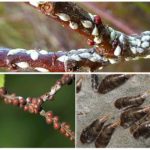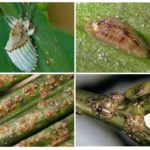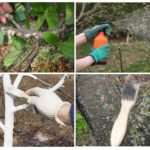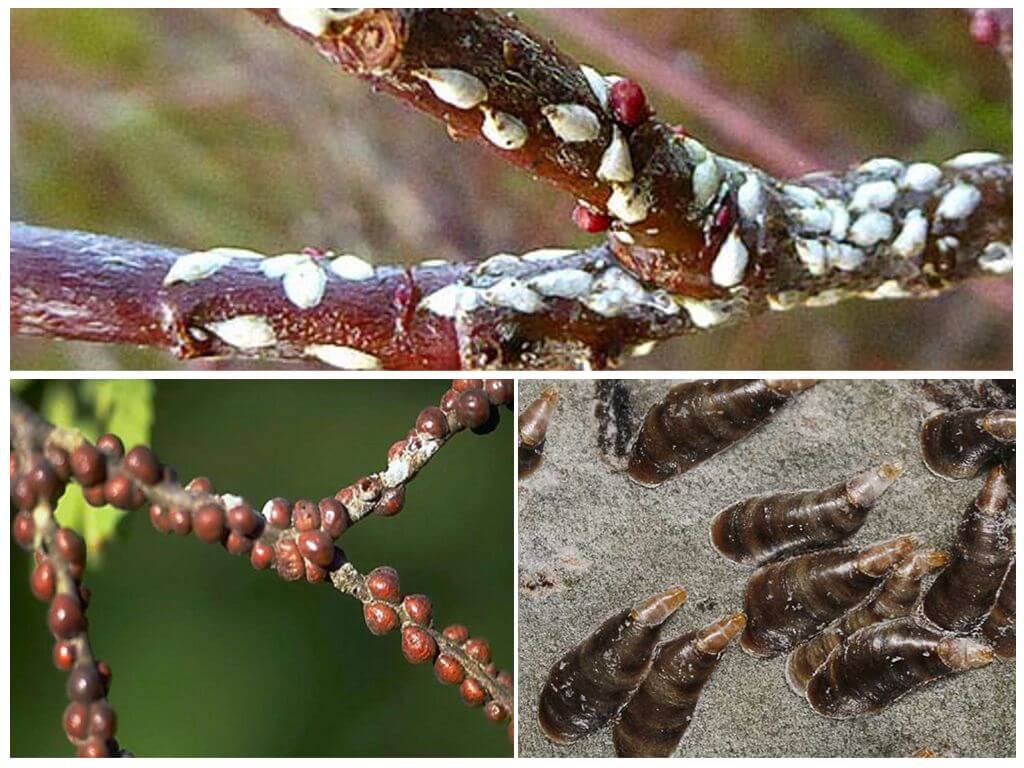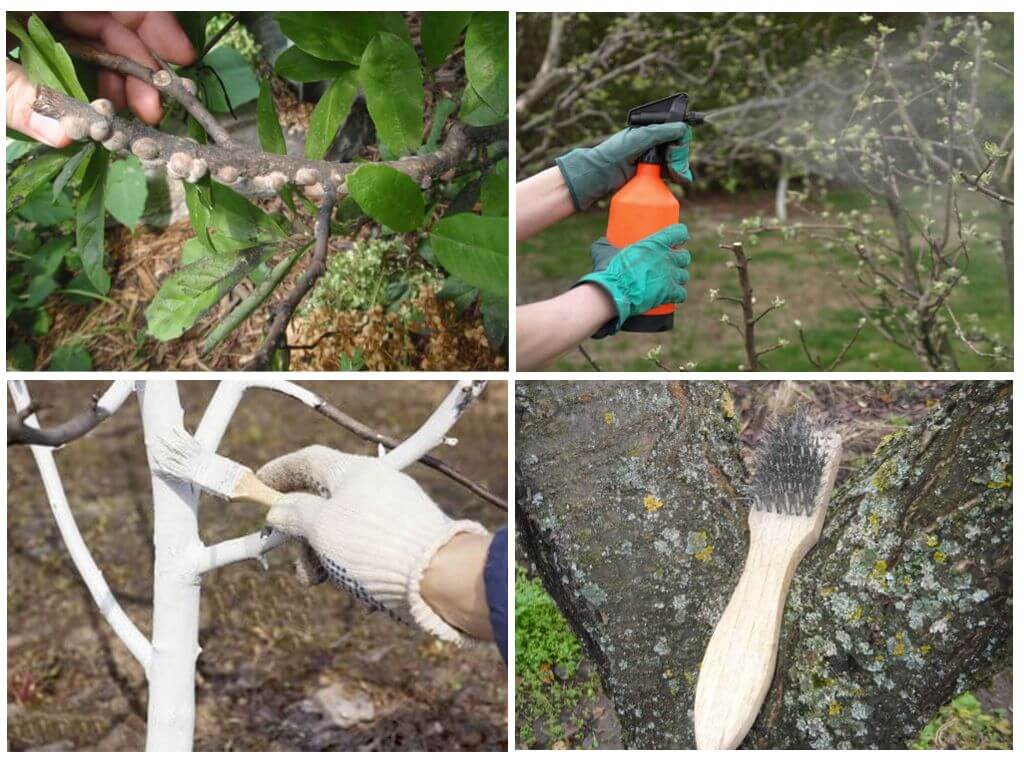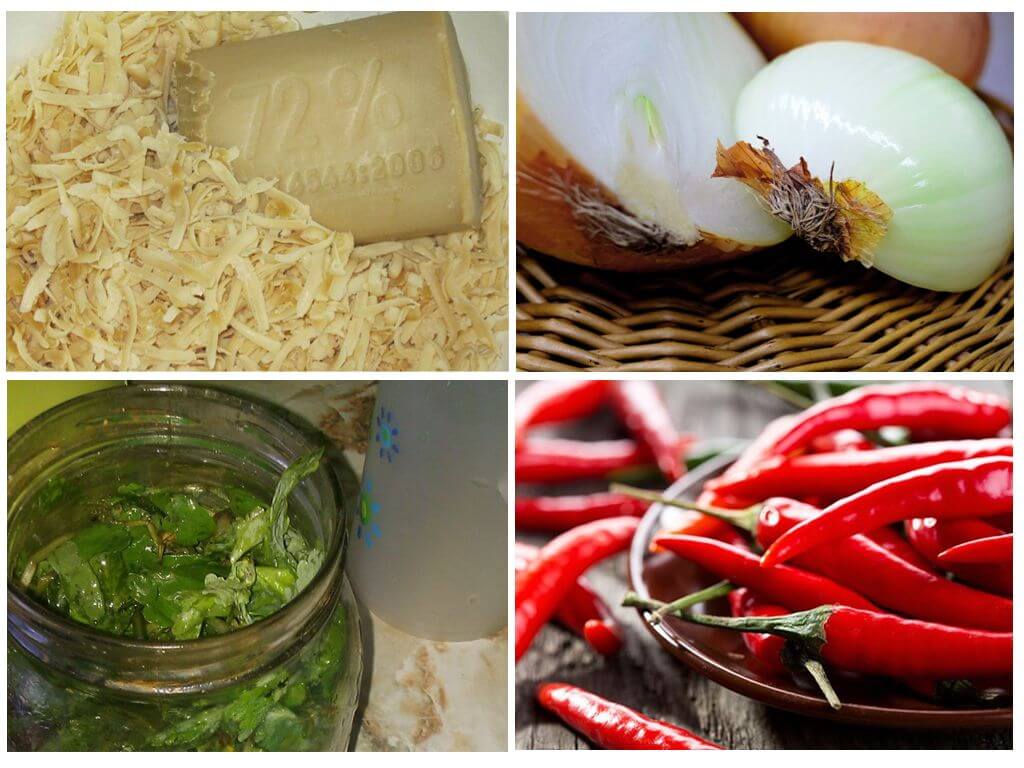How to deal with the shield in the garden on plums, cherries and other trees
Content
- Types of scales
- Breeding shchitovki
- Methods of struggle
- Folk recipes from the pest
Shchitovka is a small insect, a pest of garden and garden crops, surprising with its camouflaging capabilities. There are various methods of dealing with the shield in the trees in the garden, both folk and chemical, that will help get rid of it.
Shchitovka and its species
The peculiarity of this insect is manifested in the presence of a protective shield consisting of the remnants of the scales of the larva glued together by its secretions.Outwardly, such a shell is very similar to irregularities in the surface of the bark of trees, which makes it difficult to visually detect the pest.
The size of an insect does not exceed 5 mm, its main occupation consists in sucking the juices from plants, therefore it is imperative to fight the shield in the garden, otherwise during its mass reproduction the bark, fruits and ovaries on the tree will be covered with placers of these pests. Insects also secrete honeydew, which becomes a breeding ground for the reproduction of soot fungi, which is why the diseased plants gradually dry out and die.
Signs of settlement shchitovki:
- yellow spots appear on the leaves, then they turn yellow completely, twist and fall from the branches;
- bark cracks, thin and thicker branches begin to fall off;
- there is a slowdown in the growth of the tree, which can lead to its complete drying and death.
Infected trees are most susceptible to infection by weakened trees; an excess of nitrogen fertilizers, insufficient illumination of plants, lack of moisture, and dry air also affect their appearance.
On the dacha and garden plots of central Russia, several types of flaps can be found at once:
- California - affects fruit trees: apples, peaches, plums, etc. On a pear tree branch, the shield looks like small dots with colored dots or a rim.
- The comma-shaped body has a white body, similar in shape to a comma, looks like a growth on the bark of a tree up to 4 mm in size, on top of the female there is a shield of light brown color. During reproduction, the female lays up to 100 eggs and dies, and the nest, covered with a protective armor, safely hibernates even at frosts down to -30 ° C. In spring, young “strollers” of yellow color of microscopic size of about 0.3 mm in search of food quickly move along the tree trunk, at such a moment they are easiest to find. Then they stick to a specific place of the cortex and “grow” to it, throwing off the legs.
- Willow flap shield - different from other types of wide and flat shell in white or gray, size 1.8-2.5 mm. Females have a body of yellow-red hue, they lay purple-red eggs. Willow dwells currants on currants, raspberry, gooseberry, as well as willow, bird cherry, aspen and other trees.
Breeding shields
The females of the Californian shchitovy lay up to 140 live larvae of an oval form of yellow-lemon color at once. After growing up a little, strollers actively begin to move along the branches of the plant.Having inserted a proboscis into the bark, they release a wax secretion in the form of threads that stick around their body and gradually harden, becoming a gray shell. After 10-12 days, the cover is discarded during moulting, the larva enters the next stage of growth. At the onset of cold weather, the shell becomes denser and becomes black. In winter, the first and second instar larvae can be found, as well as already adult fertile female shchitovki on cherry plum and other trees.
With the onset of spring heat, with the onset of sap flow, all generations of insects awaken and are ready to be active. The larvae are settled in all branches, leaves, shoots on the tree. Larvae feed on plant sapsticking to its leaves. This time is ideal for the main pest control stage.
The shield on the apple and other fruit is able to completely cover the trunk and branches, because of which dying of the damaged bark, dropping of diseased leaves, drying of thin branches occurs. Sick trees are more easily affected by other pests: bark beetle and black cancer. On felt cherries they can damage all small shoots and leaves in a few days.
On a note!
The spread of insects between trees occurs through the crawling of the larvae of "strollers" along the closed branches.
Methods of struggle
It is very difficult to exterminate the shield, since the adults are protected by durable chitinous shell, and the majority of toxic chemicals do not affect them. As a result, they can only be cleaned by hand from the bark of trees.
The shield on the plum, on the sweet cherry and other fruit is scraped from the bark with a metal brush or a special scraper, and adult females must be destroyed along with the laid eggs. With strong irreversible damage, pruning of dead branches and their burning is done.
On saplings, the found scutum placers are removed mechanically, and the branches are additionally washed with a solution of household soap. Similarly, struggling with the parasite and on decorative indoor plants.
But young larvae, especially in their moving period, are exposed to pesticides.
Before you start fighting with the shield on cherries and other fruits, you must consider the following rules:
- good watering the surrounding landing;
- it is recommended to first test non-toxic methods of control;
- spraying soapy water can be done no more than once every 7 days, it is better to use a mild liquid soap;
- to improve the effectiveness of drugs should be used alternately.
After scraping the tree must be treated with insecticides. Experts recommend the following drugs:
- Actellic is an emulsion to combat garden pests, it is not addictive, but it is dangerous for animals and people, because it has a strong odor;
- Aktara is a highly effective remedy, dangerous for bees, it is not used in residential premises;
- Bitoxibacillin - a drug with live bacteria, safe for people and animals, the smell is absent, but the treatment must be done several times. It acts only when the air temperature is above + 18˚С;
- The preparation 30 is an environmentally safe means, it is used in spring before flowers appear on trees.
Important!
When using all of the above means, you must wear protective clothing, a respirator and gloves, so as not to get poisoned.
Folk methods
There are many popular methods that have been tested by gardeners for more than a decade to combat the shield on a pear, apple, peach, etc .:
- The use of a solution of rubbed soap and chopped garlic in proportion with water 1: 1: 3. Sick plants need to be sprayed, and after a day to wash with clean water from a hose. Repeat the procedure every 3 days until the parasites disappear.
- Onion infusion is made of 4 onions, filled with 1 liter of water, insist 3-4 hours, then strain and apply for spraying.
- Freshly chopped hot pepper 100 g pour a liter of water and cook for 10-15 minutes, then insist day and filter. When processing, green soap is added at the rate of: 10 g of pepper tincture and 5 g of soap per 1 liter of water;
- 300 g of wood ash pour 1 liter of boiling water, cook for 30 minutes, cool and strain, dilute with water up to 10 l and spray planting.
- 3-4 kg of fresh celandine insist in 10 liters of water a day, can be used for watering and treating trees.
Non-chemical countermeasures
To combat the shield on peach, cherry, etc. biological methods can also be used:
- carnivorous wasps or ladybugs released on fruit bushes and trees are able to quickly eat pests, and then just fly away for prey;
- the use of a weak solution of liquid soap with water (2 tsp.3.5 l) for washing the stems and leaves on both sides will help in the fight against the shield;
- even more effective will be the treatment of special horticultural oil (nimovym).
To avoid pest infestation, it is necessary to purchase seedlings and cuttings for your garden only in specialized nurseries that guarantee the absence of diseases and pests.

